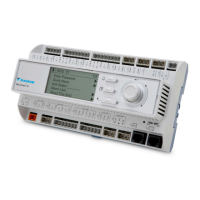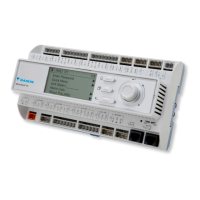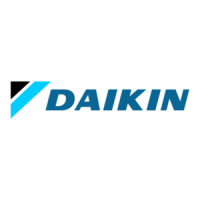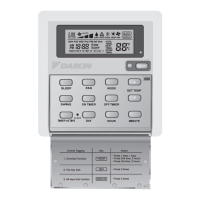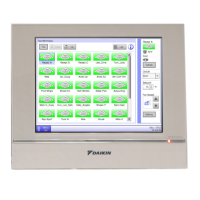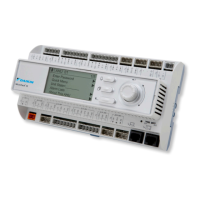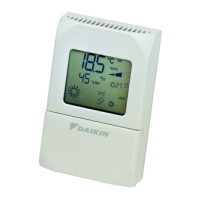Daikin IM 696-4 11
General Description
Temperature Sensors
The MicroTech II controller uses passive positive temperature
coefficient (PTC) sensors. These sensors vary thei
r input
resistance to the MCB as the temperature changes. Resistance
versus temperature information is included in
“Troubleshooting Temperature Sensors” on page 63.
Pressure Transducers
The MicroTech II controller uses 0 to 5" w.c., 1 to
6 VDC
static pressure transducers for measuring duct static pressure.
If building static pressure control is provided, a –0.25" w.c. to
0.25" w.c., 1 to 5 VDC static pressure transducer is used.
Voltage-to-pressure conversion data is included in
“Troubleshooting Pressure Transducers” on page 65.
Humidity Sensors
The MicroTech II controller uses 0–100% RH, 0–5 VDC
hum
idity sensors. Refer to
“Humidity Sensors” on page 18 for
details regarding these sensors.
Actuators
The MicroTech II controller uses floating-point (tri-state)
control actuators for valve and damper
modulation.
Spring-return actuators are used for the cooling and heating
val
ves and mixing dampers (outside air and return air). All
cooling and heating valves are normally open and the mixing
dampers are normally closed to the outside air. On units
equipped with face and bypass (F&BP) dampers, a spring-
return, two-position end-of-cycle (EOC) valve is used to
prevent overheating or overcooling when the dampers are in
the full bypass position. All EOC valves are normally open.
The controller senses position feedback in the form of 0–5
VD
C signals throug
h 0–500 ohms potentiometers on the
heating and cooling valve and mixing damper actuators. The
MCB uses these feedback signals to display cooling or heating
capacity, mixing damper position and discharge and return fan
capacity.
Note – Face and bypass damper actuators are not equipped
with feedback to the controller. When a unit is equipped
with chilled water cooling with face and bypass or hot
water or steam heating with face and bypass, the cooling
or heating capacity is calculated by the MCB based on
drive open versus drive close time of the actuator.
Variable Frequency Drives (VFDs)
When controlling discharge, return, or exhaust fan variable
frequency drives, th
e MicroTech II controller uses floating-
point (tri-state) output signals to modulate the drive speed.
Speed feedback is supplied to the controller via a 0–10 VDC
signal from the VFD. The MCB uses these feedback signals
to
display discharge and return fan capacity.
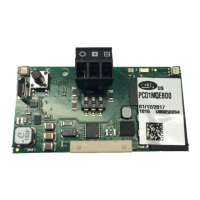
